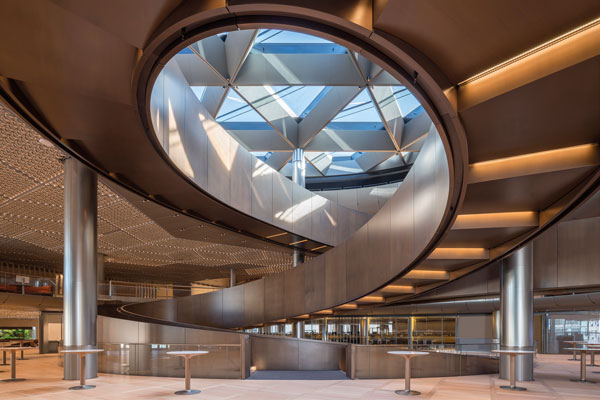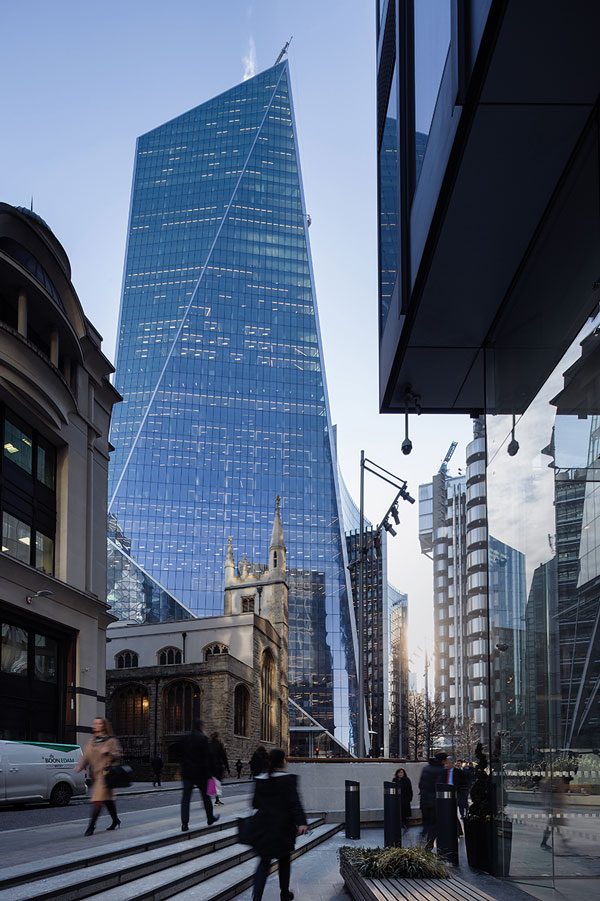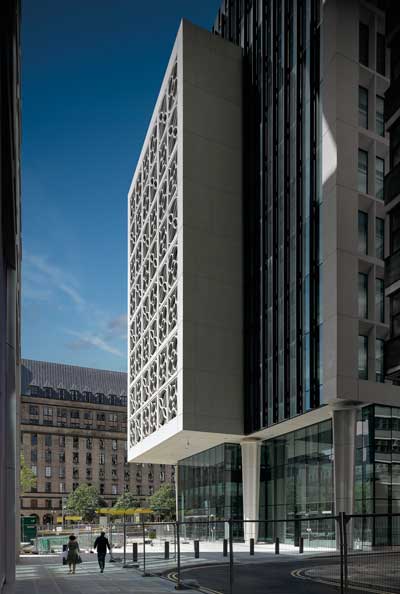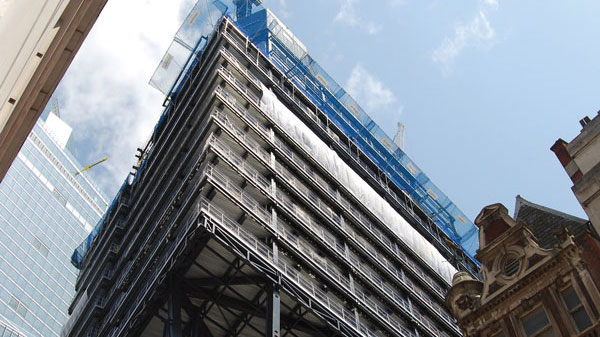Projects and Features
From drawing board to Main Board
Spreading the message about the high level of design and engineering capability provided by steelwork contractors will be a key driver of new BCSA President Gary Simmons’ term of office. He will also be a high-profile advert for the apprenticeship route to success, as Nick Barrett explains.
New BCSA President Gary Simmons has enjoyed a highly successful career in constructional steelwork; rising to the main board of leading steelwork contractor William Hare Limited (WHL) as the director in charge of engineering design would be regarded as a huge career achievement by anyone in the industry.
His route to the top didn’t have the conventional start that might be expected however, as he is the first of the company’s apprentices to reach Board status. Not only that, but despite being one of the country’s leading structural steelwork experts he didn’t even come to the company from a structural engineering background.
“I came into the industry on a drawing board, starting straight from school as an apprentice draughtsman in the general drawing office. Hares provided a great apprenticeship, and it is a route that I would happily recommend to anyone these days.
“Almost everything I have learned I learned at Hares, and all the hard work I put in has been recognised by the company, by owners David and Susan Hodgkiss in particular. I have many colleagues at Hare to thank for their friendship and guidance over the years and, as the old cliché goes, ‘I really wouldn’t be here without them’”.
Lancashire born and raised Grammar schoolboy Gary had planned to go to university, but family circumstances prevented that, so the apprenticeship route it had to be. “I started in 1977 at the princely sum of £27 a week, which was decent for an apprentice at that time, with the first pay-packet handed over unopened to my mother, as we did in those days. I got five pounds back and I was happy with that.”
Undiscouraged by not getting to university, the young Gary hadn’t given up hopes of advancement and at his interview asked if he could have Friday afternoons off so he could continue with A-level studies at college. “Mostly that meant copying down all of my friend’s notes for the lessons I missed because I was working.” With that capacity for hard work, he unsurprisingly was awarded the Apprentice of the Year in 1979, and earned A-levels in History, Geography and Economics, which would have been enough to get him onto his degree course of choice.
Progress through the drawing and design offices at Hares was fast, and he was soon taking a leading design role on key projects in the commercial, industrial and nuclear sectors. After a few years in the general drawing office, he was transferred to a smaller and more specialised drawing office at Gin Pit Village, Astley, to work on international oil and gas projects.
“In the mid-1980’s the WHL design office consisted of just two people, and that was where I moved to next, which was where my training as a steelwork connection designer started. My teachers, Alan Walker and Alan Gillette, taught me not only the fundamental principles of steelwork design but also the practicalities of ‘good’ design, which means understanding the challenges of fabrication and construction when determining the design form.”
This was a time of constant and rapid expansion at WHL and when a new Engineering Office was formed at the California workshop in Bury, Gary was invited to join it by early mentor Ken Crook. He eventually became the sole design engineer responsible for all the major projects undertaken at that site.
Many careers would have happily settled there, but a thirst for broadening his experience led Gary to join consulting engineer White Young Green to work alongside British Nuclear Fuels Limited at Risley, Warrington. He was part of the Structural Steelwork Division working on various projects at the Thermal Oxide Reprocessing Plant (THORP) at Sellafield, quickly progressing to a senior position within the team, responsible for both production of design calculations and the independent checking of other works.
The pull of steelwork contracting proved strong however and after two years Gary was attracted back to WHL as a Senior Designer. He progressed through the business to be appointed the Main Board Director responsible for the Group Engineering Department, which he oversaw developing over 20 years to include over 300 technical staff in offices as far apart as the UK, United Arab Emirates, Portugal, the Philippines and India.
By the mid 1990’s WHL accounted for some 50% of all fabricated steel exported internationally by BCSA members. Projects Gary has on his CV include the Airbus A380 Wing Production Facility at Broughton, Chester; the London Olympic Stadium Roof Transformation; the M6 Thelwall Viaduct Bridge Crossing at Warrington; 20 Fenchurch Street (the Walkie Talkie) in London; Bloomberg HQ in London; and Hinkley Point C Nuclear Power Station.

The project he regards as his favourite though is the 120m-tall, diagrid Aldar HQ – The Pearl – at Al Raha Beach, Abu Dhabi, the first circular building of its type in the Middle East. Steel certainly showed its benefits here, with advanced 3D modelling deployed to bring the project in within a very tight time frame to be ready for the 2009 Formula 1 Grand Prix.
Gary also held responsibility for Technical Research & Development at WHL and has been behind several innovations that improved the supply and safe construction of structural steelwork, such as the concept design and introduction of a proprietary building edge protection system. While sitting on a train journey he worked out the concept of the design for a moveable track to allow ease of use of Mobile Elevating Work Platforms (MEWPs) for steel frame construction. Other ideas that have arisen on train journeys include a type of composite column used at Hares’ 52 Lime Street project, often referred to as Lancashire Columns.
A theme of his Presidency will be getting across to clients and the rest of the construction team that steelwork contractors make an invaluable contribution to projects that is often under appreciated. “We don’t just design connections, we contribute a lot more than that, and with the increasing complexity of iconic structures we are often faced with engineering challenges that have no existing design rules, so we need to develop our own methodology, and in effect write our own piece of design code.
“Providing that level of skill and expertise justifies steelwork contractors being at the top table and involved in projects from the earliest design stages. It will save clients time and money and allow more sustainable, efficient designs to be created, which will be of national significance as we strive towards net zero carbon.”
Gary can point to a host of examples where the steelwork contractor’s input has produced the benefits he is talking about. “We need to raise knowledge of the benefits of the high level of design and engineering capability steelwork contractors have. If I can make a positive contribution to that over my two years as President, I’ll regard it as time well spent.”














